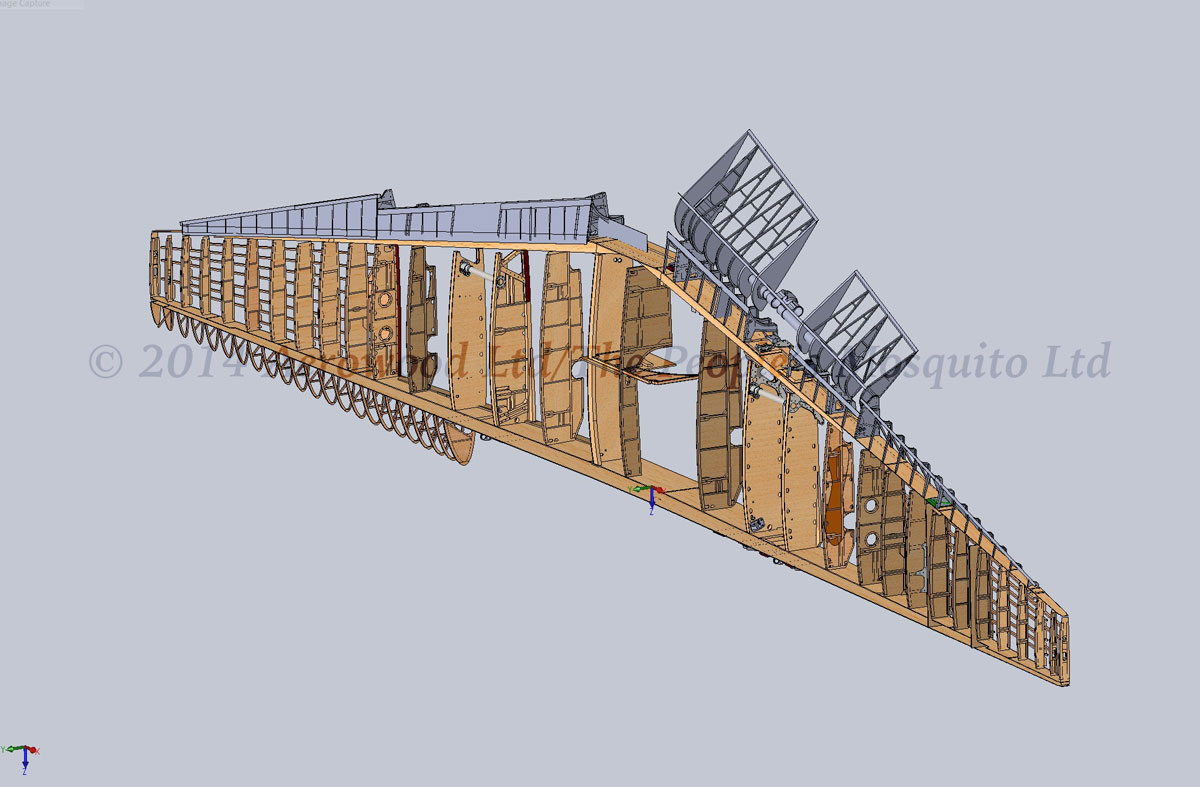
An astonishing collection of thousands of microfilm aperture cards, containing secret wartime plans for the deHavilland Mosquito, one of the UK’s most innovative aircraft, has been saved from destruction. Just days before the bulldozers were due, The People’s Mosquito, a UK charity that aims to return a Mosquito to British skies, was called with news of the find.
An amazing array of specialized modifications are described in the plans, including wartime variants designed to carry torpedoes (possibly for attacking the German battleship Tirpitz), and another featuring desert survival equipment, potentially destined for North Africa. The set of more than 20,000 wartime technical drawings and diagrams has so far raised as many questions as it has answered. Thought to be the world’s only complete set of Mosquito engineering drawings, the cache will help The People’s Mosquito return this iconic aircraft to UK skies, but also provide a massive source of original material for historians to pore over for years to come.
“No other aircraft has amassed such a remarkable combat record in so short a time, flying so many different types of mission and excelling in each one,” says John Lilley, Chairman of The People’s Mosquito. “Even today, it remains one of the world’s most successful multi-role combat aircraft, and it was all-British [Ed. with Canadian and Australian production lines too], made by men and women who only a few months earlier had been building furniture and mending pianos.” Even Germany’s wartime minister for aviation, Herman Goering, was a fan of the aircraft, saying “It makes me furious when I see the Mosquito. I turn green and yellow with envy.”
In a forgotten corner of a wartime de Havilland factory, the thousands of drawings lay discarded. Ranging from the simple and unremarkable, to complex wiring diagrams and drawings stamped ‘SECRET’ – even unknown marks of Mosquito that were never constructed. “An aircraft engineer for a well-known company got in touch with us through our website,” explains John Lilley. “He understood the tremendous historic value in these engineering drawings and how useful they could be. The building itself was soon to be demolished and the contents discarded. It’s incredible to think that they might have been lost forever.”
The discovery of such an extensive set of plans is a significant boon in the charity’s restoration efforts. “As you can imagine, restoring an aircraft that is 70 years old presents several challenges, one of which is a lack of information on the building techniques, materials, fittings and specifications,” described Ross Sharp, Director Engineering & Airframe Compliance, The People’s Mosquito. “These plans enable us to glean a new level of understanding and connection with the brilliant designers who developed the world’s first, true, multi-role combat aircraft.”
Some of the drawings reveal things previously unknown, such as Figure 1, showing the attachment for a Mosquito to carry an 18” torpedo or a 2000 pound bomb, long before the Sea Mosquitoes of Coastal Command. Others reveal previously classified information: Figure 2 details the installation of American radar equipment in Mosquito nightfighters. “Radar technology was at the forefront of the Second World War, it played a hugely important role,” explained Lilley. “Any information or details regarding advanced airborne radar was highly sensitive. I can’t imagine what lengths the German’s would’ve gone to in order to get their hands on these.” Another of the aperture cards shows the level of detail and exacting specifications the Mosquito was designed to.
A technical drawing of a single piece of timber, Figure 3, diligently drawn on Boxing Day 1940. “It is hard to comprehend the way in which the War pervaded the everyday life of people in Britain and across the world,” continues Sharp. “To think that the day before this was drawn, J. Lauderdale had been celebrating a wartime Christmas. The spirit and solidarity shown by the people was remarkable, we want to re-kindle some of that with The People’s Mosquito.”
Even un-built variations of Mosquito are being discovered as the records are combed through. Figure 4 shows a previously un-described photo reconnaissance version of the Mk V. Other interesting finds include a schematic of stowage for desert equipment in the rear fuselage, the drawing marked ‘Mosquito Mk I, Tropics’ as shown in Figure 5.
Although 7,781 Mosquitos rolled off the production line, the last in 1950, there are none flying in Europe. “It’s time the sound of twin Merlins returned to airshows around the UK,” says Lilley. “That’s what we aim to achieve, with the support of others who believe in celebrating this remarkable all-British achievement.”
To read more about these remarkable drawings visit www.peoplesmosquito.org.uk
Download the PDF samples of the drawings
Special Equip. for PR. Mk V, 0685, UNBUILT
Fitting for Torpedo or 2000lb Bomb
About The People’s Mosquito
The People’s Mosquito is a registered charity (No. 1165903) with the sole aim of restoring and returning a UK-based DH.98 Mosquito to British skies. Once RL249 is flying we will maintain and operate the restored aircraft, funded by public donation, sponsorship and income from sale of branded merchandise and other sources, listed elsewhere on their website, with the intention of providing many hours of flying displays every year for the people of the United Kingdom.

































